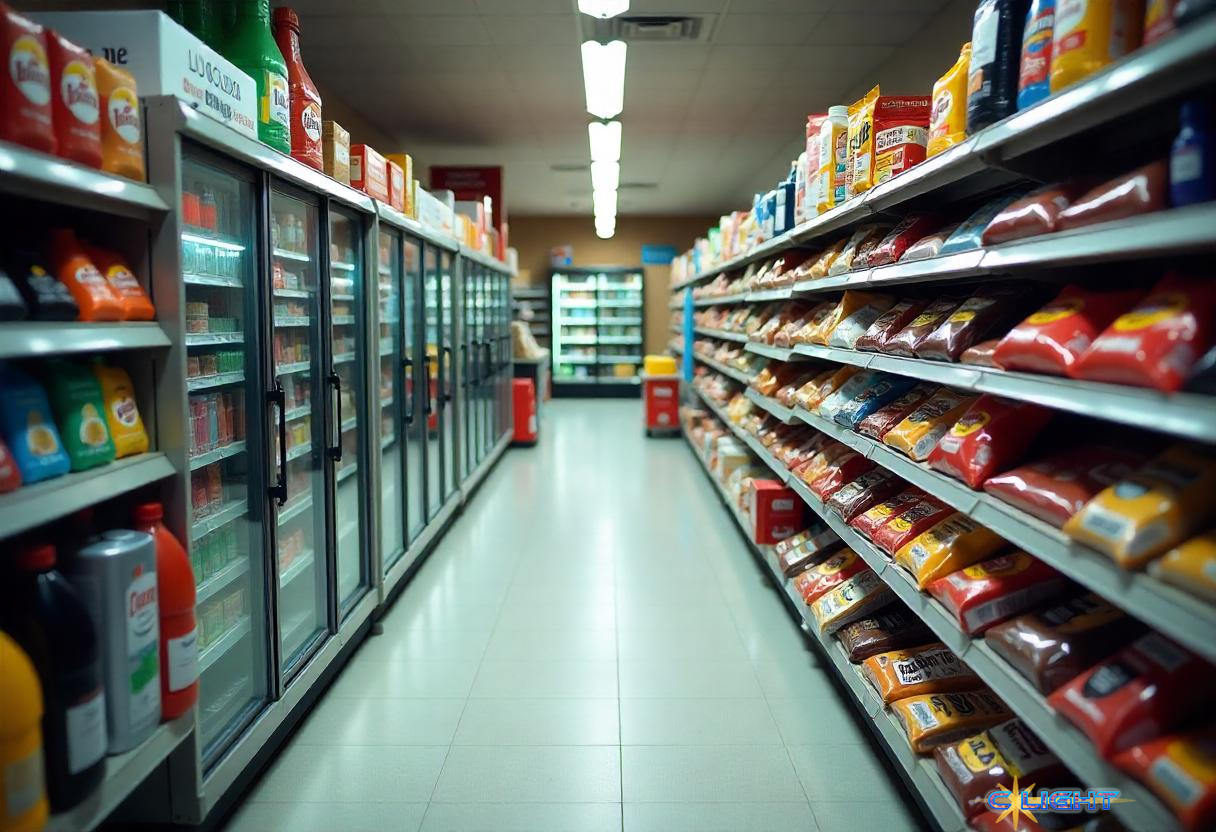Alright, let’s start the day with a little honesty, shall we? Just between us. What did you really have for breakfast this morning? Anything… extra? Maybe a quick detour between the car and your desk? And how about that little something you snagged from the breakroom, thinking nobody was looking?
It’s okay, you’re among friends. We Americans have a certain reputation for, let’s call it, enthusiastic eating. We graze, we snack, we often reach for something quick, easy, and maybe not entirely recommended by nutritionists, especially when stress levels start to climb. Comfort food isn’t called comfort food for nothing – a bag of chips, a can of soda, that specific instant noodle flavor that reminds you of home… they serve a purpose, right?
Well, brace yourselves, fellow enthusiasts, because the comfort might be about to cost you. Those big political decisions about tariffs – taxes on imported goods – are starting to ripple through the economy, and they might be aiming right for our beloved snacks and pantry staples. Get ready for some potential sticker shock that could add a whole new layer of anxiety to your… well, anxiety.
The big picture already shows some jitters. Big consumer companies are noticing that folks are feeling worried about the economy and are starting to pull back on spending. Just this week, PepsiCo – the makers of everything from Pepsi and Gatorade to Doritos and Cheetos – had to tell investors they weren’t feeling quite as optimistic about shoppers as they were a few months ago. They actually cut their profit forecast for the year. Similarly, Chipotle saw sales dip, noting customers were eating at home more due to “economic uncertainty.” Even Procter & Gamble mentioned people might be doing less laundry to save on detergent! When folks are rethinking laundry day, you know they’re watching their wallets.

Part of the pressure on these companies comes from rising costs, and yes, tariffs are part of that calculation. PepsiCo mentioned factoring in higher costs from things like the 25 percent tariff on imported aluminum, which affects every single can of soda or bubbly water. It’s not just an abstract trade war; it’s potentially adding pennies and dimes to the production cost of everyday items. And as if navigating general economic anxiety and tariff impacts wasn’t enough, these companies are also juggling other curveballs – like the booming popularity of weight-loss drugs like Ozempic apparently curbing some snack sales, and navigating Health Secretary RFK Jr.’s recent declaration that “sugar is poison” alongside his push to eliminate petroleum-based food dyes by 2026. It’s a tricky time to be in the business of convenient calories!
While the giants like PepsiCo might weather the storm by offering smaller packages (notice those $1.99 single-serving bags?) or tweaking formulas, the impact of tariffs feels much more immediate and personal when you hit the aisles of your local ethnic grocery store, especially those specializing in goods from China, which faces potential tariffs as high as 145 percent on some goods.
Take a walk through a place like Hong Kong Supermarket in Manhattan’s Chinatown, as one reporter did recently. It’s a lifeline for millions, stocked floor-to-ceiling with specific ingredients essential for cultural dishes – the right black vinegar, the perfect vermicelli, those gloriously weird cheese-flavored instant noodles you just can’t find anywhere else. But look closely at the labels: “Product of China.” Suddenly, this space of comfort and continuity starts to carry a “low, simmering dread.” Prices haven’t skyrocketed yet, but shoppers are bracing. There’s more pausing, more sighing, more careful calculation – maybe one pork bun instead of three, a wistful glance at the pricey fresh durian. One shopper admitted she was thinking about stockpiling basics like soy sauce.
And the price tags are already starting to tell the story. Peeled mung beans, formerly $1.75, now $1.99. Dried chestnuts jumped from $9.99 to $11.55. The store manager just shrugs – “What can we do? Unless we sell at a loss, which isn’t sustainable.” Small, independent ethnic grocers run on thin margins already; these tariffs hit them and their customers especially hard. You can’t just swap out Shaoxing wine for cheap sherry in your mom’s signature dish and expect nobody to notice. As one shopper put it, “Western grocery stores don’t have the groceries I need. If prices keep going up, I can’t do anything about it.” It feels like culture itself is being priced out of reach.

So, here we are. We often reach for familiar, affordable snacks and comfort foods when life gets stressful or anxiety bubbles up. Economic uncertainty, partly fueled by things like unpredictable tariff policies, makes us stressed. And now, those very tariffs are threatening to make our go-to comfort items more expensive, from the mass-market chips affected by aluminum costs to the specific imported ingredients essential for feeling connected to home.
Could this be creating some kind of cruel feedback loop? Stressed about the economy? Have a snack! Oh, wait, the snack costs more because of economic policy? Great, now I’m more stressed! It feels like a cosmic joke sometimes.
It seems our national appetite for enthusiastic eating is on a collision course with the complicated realities of global trade policy. Big brands are adjusting, local ethnic stores are sweating it out, and all of us might need to start budgeting a little more carefully for our coping mechanisms. Maybe it’s finally time to explore the untapped comfort potential of… carrot sticks? Nah, probably not. But it certainly gives us something to chew on over our (potentially more expensive) morning coffee.
Personally, I’m sticking to good ol’ Indiana-raised popcorn.
Discover more from Chronicle-Ledger-Tribune-Globe-Times-FreePress-News
Subscribe to get the latest posts sent to your email.










